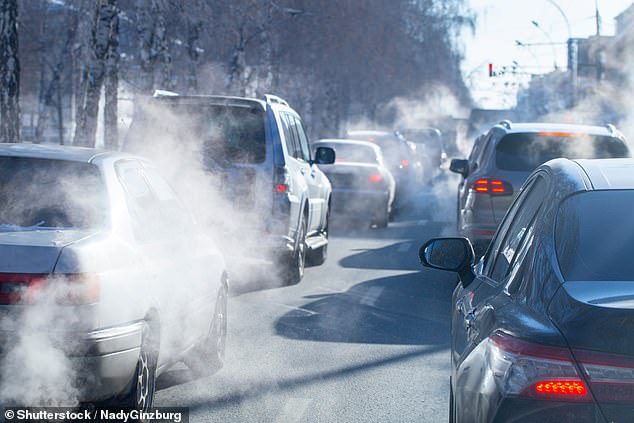Doctors have discovered that tiny particles of air pollution could be increasing the risk of lung cancer in women who have never smoked.
Exposure to small particles of smoke emitted by car exhaust and burning wood may increase the risk of a DNA mutation known to trigger lung tumors, according to research presented today at the International Association for the Study of Lung Cancer (IASLC).
Although smoking remains the biggest risk factor for lung cancer, it is estimated that nearly 6,000 people who have never smoked die from the disease each year.
While smoking rates are declining, some studies show that cases among young, nonsmoking women are increasing.
According to a 2017 study, lung cancer in Britons who never smoked doubled between 2008 and 2014.
Although smoking remains the biggest risk factor for lung cancer, it is estimated that nearly 6,000 people who have never smoked die from lung cancer each year, some of whom may be due to exposure to air pollution.
Another 2023 report from the American Cancer Society found that more women between the ages of 35 and 54 are now diagnosed with lung cancer than men of the same age.
Meanwhile, doctors treating lung cancer in the US have reported an increase younger caseload.
Researchers at the British Columbia Cancer Research Institute in Vancouver, Canada, collected data on 255 lung cancer patients who had never smoked, including where they had lived since birth.
Pollution levels at their homes were then analysed using satellite data, air pollution forecasts and ground measurements within a 10-kilometre area.
The team obtained annual exposure data going back to 1996, when accurate information on global air pollution became available.
The researchers also looked at whether the patients developed a change in their DNA that is known to increase the risk of lung cancer, called an EGFR mutation.
The genetic mutation, which is not normally present at birth, speeds up the activity of a protein called epidermal growth factor receptor (EGFR), which helps cells grow and divide.
Extreme cell division is what causes cancers to develop over time.

Although small, these particles are thought to cause inflammation in the lungs that can awaken normally dormant cells, potentially leading to cancer-causing mutations and tumors.
Researchers found that patients diagnosed with stage 4 lung cancer were much more likely to have EGFR mutations compared to those who did not have the disease.
But they also found that women were more likely to have EGFR mutations if they were exposed to at least three years of polluting particles smaller than 2.5 micrometers, also known as PM2.5.
This was true whether the woman smoked or not.
The same was true for patients who had been exposed to pollution for five years prior to diagnosis.
Surprisingly, these associations were not evident in men who never smoked.
PM2.5 are soot particles in the air invisible to the human eye that can enter the blood and penetrate deep into the lung.
They can be emitted by vehicle engines, burning wood and tobacco.
Although small, these particles are thought to cause inflammation in the lungs that can awaken normally dormant cells, leading to cancer-causing genetic mutations.
In 2013, the International Agency for Research on Cancer (IARC) classified outdoor air pollution and its key component, PM 2.5 particles, as Group 1 carcinogens, indicating that they cause lung cancer.
Although smoking is the leading cause of cancer, researchers and public health experts have been unable to identify an association that explains why people who do not smoke or have never smoked are diagnosed with the disease.
Lung cancer is the third most common cancer in the UK, with around 48,500 people diagnosed each year.
Symptoms include persistent cough, chest infections, and chest or shoulder pain.
About 70 percent of cases are caused by smoking, while other risk factors may include exposure to radon gas, certain chemicals and a family history of lung cancer.
Although lung cancer is rare in people under 40, in general According to Cancer Research UK, there are around 2,300 new cases of cancer in young people in the UK each year.
But the study’s authors say more research is needed to assess air pollution as a lung cancer risk.
“These findings suggest a potential impact of recent PM2.5 exposure on lung cancer in never smokers, particularly among women,” the study authors wrote.

